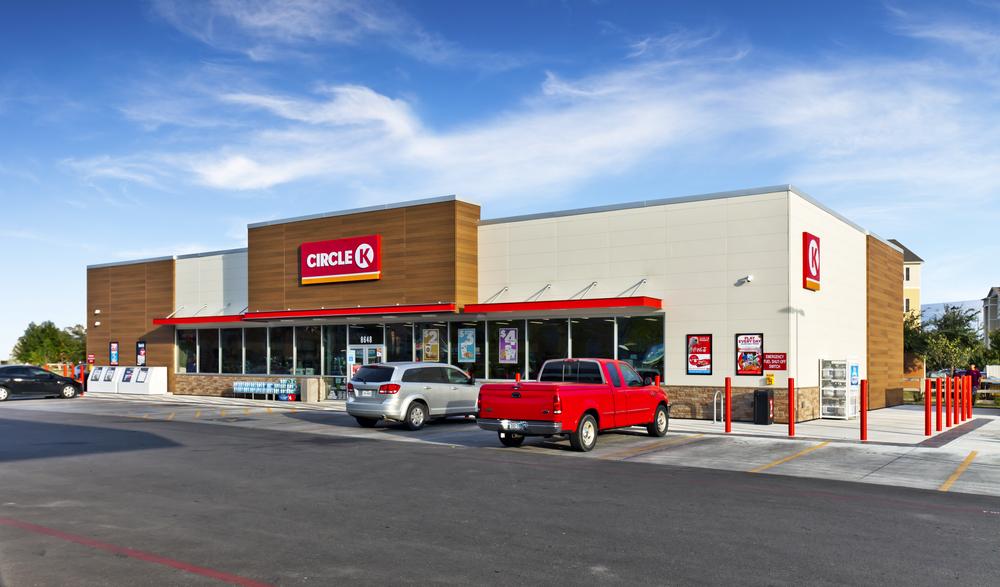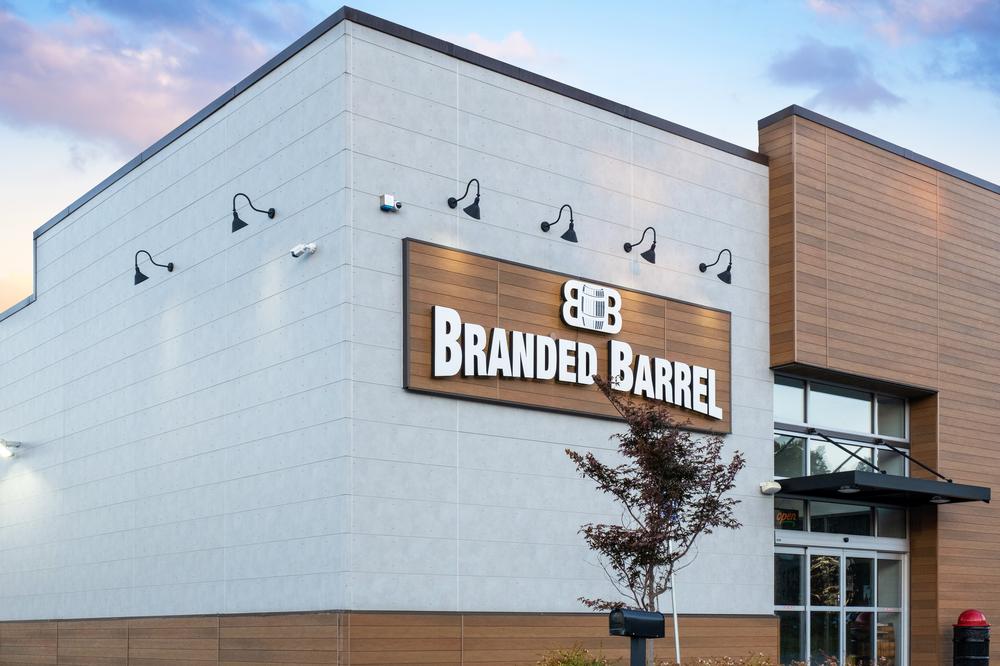Properly storing cooked meals is essential for maintaining their safety and quality, preventing foodborne illnesses, and reducing waste. Understanding the best practices for cooling, storing, and reheating leftovers can significantly extend their freshness and safety.
This comprehensive guide covers the key techniques for safely cooling, choosing appropriate storage containers, refrigeration, freezing, and reheating cooked foods. Implementing these methods ensures that your meals remain safe to consume while retaining their flavor and nutritional value.
Best Practices for Cooling Cooked Meals Before Storage

Properly cooling cooked meals is a crucial step in food safety, preventing the growth of harmful bacteria that can cause foodborne illnesses. When hot foods are stored improperly, bacteria such as Salmonella and Listeria can multiply rapidly, especially within the “danger zone” temperatures between 40°F (4°C) and 140°F (60°C). Ensuring that cooked foods are cooled quickly and safely helps maintain their quality and safety, reducing health risks.
This section Artikels effective cooling techniques, the significance of timing, and step-by-step procedures to optimize food safety during storage.Cooling hot foods promptly is essential because it limits the time food spends at temperatures conducive to bacterial growth. The goal is to bring the temperature of cooked meals from piping hot to safe storage levels within a recommended timeframe, typically within two hours.
This minimizes the opportunity for bacteria to multiply, preserving both the safety and taste of your meals.
Effective Cooling Techniques for Cooked Meals
To achieve safe and efficient cooling, various methods can be employed. Recognizing the appropriate technique depends on the volume of food, available tools, and available space. Below is a table summarizing common cooling methods, their typical durations, necessary tools, and safety considerations:
| Method | Duration | Tools Needed | Safety Tips |
|---|---|---|---|
| Shallow Containers | 1-2 hours | Shallow, heat-resistant containers | Divide large portions into smaller layers to increase surface area; cover loosely to allow heat escape |
| Ice Bath | 30-60 minutes | Large basin, ice, water, stirring utensil | Place food container in ice bath, stir occasionally to promote uniform cooling, ensure water level is below the lid |
| Portioning and Refrigeration | 2-4 hours | Portion containers, refrigerator | Distribute food into small, shallow containers; avoid overpacking the fridge to maintain proper airflow |
| Cooling Paddles or Blades | Variable, usually under 1 hour | Cooling paddles or blades designed for rapid cooling | Use as directed to maximize surface area; avoid overcrowding to improve heat transfer |
It is important to note that the timing of cooling directly impacts food safety. Food should be cooled from 140°F (60°C) to 70°F (21°C) within the first two hours. Then, it should be cooled further from 70°F to 40°F (4°C) or below within an additional four hours. This two-stage cooling process minimizes bacterial proliferation and is recommended by food safety authorities such as the USDA and FDA.
“Rapid cooling of cooked meals within the first two hours after cooking significantly reduces the risk of bacterial growth and ensures food safety.”
Adhering to these best practices and timing guidelines ensures that your stored meals remain safe, nutritious, and delicious for future consumption.
Ideal storage containers and materials for cooked meals
Choosing the appropriate storage containers is essential for maintaining the safety, quality, and freshness of cooked meals. The right materials help prevent contamination, preserve flavor, and facilitate easy handling and reheating. Understanding the various options available ensures that your stored food remains safe for consumption over time.
Different types of food-grade containers are designed to meet specific needs, and selecting the most suitable one depends on factors such as durability, safety, and practicality. This section explores the common materials used for storing cooked meals, compares their features, and highlights key considerations to ensure food safety and convenience.
Types of food-grade storage containers suitable for cooked foods
There are several common materials used for storing cooked meals, each with their own advantages and limitations. The primary options include plastic, glass, and stainless steel containers, all of which are widely regarded as safe when designed for food storage.
Plastic containers
Plastic containers are popular due to their lightweight nature, affordability, and versatility. Food-grade plastics, such as polypropylene and polyethylene, are approved for storing cooked foods. They come in various shapes and sizes, often with secure lids that help prevent leaks. However, it is important to select BPA-free plastics to avoid potential chemical leaching, especially when reheating or storing hot foods.
Glass containers
Glass storage containers are renowned for their inert properties, meaning they do not react with food, odors, or stains. They are durable, non-porous, and do not contain harmful chemicals, making them ideal for long-term storage. They are also microwave and dishwasher safe, offering convenience. However, they can be heavier and more fragile compared to plastic and stainless steel options.
Stainless steel containers
Stainless steel containers are highly durable, resistant to corrosion, and do not absorb odors or stains. They are an excellent choice for storing cooked meals that require frequent handling or transportation, such as packed lunches. These containers are often used in professional settings due to their robustness and ease of cleaning. Their main limitation is that they are not microwave-safe, requiring transferring to a microwave-safe dish for reheating.
Features to look for in safe storage containers
When selecting containers for storing cooked meals, certain features are essential to ensure safety and functionality. These features help prevent contamination, maintain food quality, and facilitate easy use:
- Food-grade material: Ensure the container is made from approved materials free from harmful chemicals like BPA or phthalates.
- Airtight seal: Containers with airtight lids prevent air and moisture from entering, thereby reducing spoilage and odor transfer.
- Durability: Choose containers that resist cracking, warping, and staining over time, suitable for repeated use.
- Ease of cleaning: Containers with smooth surfaces and dishwasher compatibility streamline cleaning and maintenance.
- Temperature resistance: Select containers that can withstand refrigeration, freezing, and, if needed, microwave reheating without degrading.
The role of airtight lids and venting in maintaining food safety
Airtight lids are fundamental in preventing bacterial growth, mold, and cross-contamination by limiting exposure to oxygen and external contaminants. They also help lock in moisture, flavor, and aroma, maintaining the quality of stored cooked meals. For foods that require reheating or venting, containers equipped with venting features allow steam to escape safely, reducing the risk of lid bulging or accidental spills.
Vented lids or containers with built-in steam release mechanisms help control internal pressure during reheating, ensuring safety and preserving the integrity of the meal. Properly sealing and venting containers also contribute to energy efficiency when reheating in microwaves or ovens, as they minimize moisture loss and uneven heating. Selecting containers with these features is a vital step in ensuring food remains safe, fresh, and enjoyable after storage.
Proper Refrigeration Techniques for Cooked Meals
Refrigeration plays a vital role in maintaining the safety and freshness of cooked meals. Proper techniques not only prevent bacterial growth but also help preserve the quality and flavor of leftovers, ensuring they remain safe for consumption over time. Understanding the correct methods of refrigeration is essential for effective food safety management in both household and commercial settings.
Implementing effective refrigeration practices involves maintaining appropriate temperatures, organizing foods to prevent cross-contamination, and adhering to recommended storage durations. By following these guidelines, individuals can significantly reduce the risk of foodborne illnesses and extend the shelf life of cooked dishes.
Recommended Temperature Range for Refrigerated Cooked Foods
Maintaining the correct temperature in the refrigerator is fundamental to inhibiting bacterial growth. The United States Food and Drug Administration (FDA) and other food safety authorities recommend keeping the refrigerator at or below
4°C (39°F)
. This temperature slows bacterial multiplication, which can cause food spoilage and foodborne illnesses. It is essential to regularly monitor refrigerator temperatures using a reliable thermometer, especially in household settings where temperature fluctuations may occur due to frequent door openings or power outages.
For optimal safety, cooked foods should be cooled promptly to this temperature range after cooking and placed in the refrigerator within two hours. In hot environments or when ambient temperatures exceed 32°C (90°F), this window shortens to one hour to prevent bacterial proliferation.
Methods for Organizing Leftovers to Prevent Cross-Contamination
Proper organization within the refrigerator is crucial to minimize the risk of cross-contamination between different foods. Fresh cooked meals should be stored separately from raw ingredients, especially raw meats and seafood, which harbor higher levels of bacteria. Using designated shelves or bins for cooked foods and leftovers helps keep them isolated from raw products.
Implementing storage practices such as placing cooked meals in sealed, airtight containers on the upper shelves prevents drips or leaks from contaminating other foods. Additionally, keeping ready-to-eat items away from raw or potentially contaminated foods reduces the likelihood of cross-contact and preserves the microbiological safety of the meals.
In busy household refrigerators, label shelves or sections for specific food groups to streamline organization and ensure proper handling. This reduces the chance of accidental contamination and makes food retrieval more efficient.
Storage Times for Various Cooked Dishes
Knowing the appropriate storage durations for cooked meals helps minimize the risk of consuming spoiled food and ensures safety. The following table summarizes recommended storage times for common cooked dishes when kept at or below 4°C (39°F):
| Cooked Dish | Maximum Storage Duration |
|---|---|
| Cooked Poultry (chicken, turkey) | 3-4 days |
| Cooked Beef or Pork | 3-4 days |
| Seafood Dishes | 1-2 days |
| Cooked Vegetables | 3-4 days |
| Soups and Stews | 3-4 days |
| Cooked Pasta or Rice | 3-4 days |
Extended storage beyond these periods increases the risk of bacterial growth and spoilage, even if the food looks or smells fine. Always check for signs of spoilage before reheating and consuming leftovers.
Tips for Labeling and Dating Stored Meals for Freshness
Labeling leftovers with the date of storage is an effective practice to manage food freshness and prevent accidental consumption of spoiled items. Use waterproof, erasable markers or pre-printed labels to clearly indicate the storage date on each container.
Implement a first-in, first-out (FIFO) system, so older items are used before newer ones. This approach helps reduce waste and ensures that only safe, fresh leftovers are consumed. Additionally, recording the type of dish on the label can aid in quick identification, especially in households with many stored leftovers.
Consistently adhering to proper labeling and dating protocols fosters good food safety habits, minimizes waste, and promotes confidence in the safety of stored cooked meals.
Freezing Cooked Meals Safely and Effectively
Freezing cooked meals is an essential method for prolonging their shelf life while maintaining quality and safety. Proper techniques ensure that meals remain nutritious, flavorful, and free from harmful bacteria during storage. Implementing effective freezing practices can help minimize waste and provide ready-to-eat options for busy days or future meals.
Through correct preparation, packaging, and handling, freezing can preserve the texture, taste, and nutritional value of cooked foods while significantly reducing the risk of bacterial proliferation. This section elaborates on the best practices for preparing, packaging, and defrosting cooked meals to optimize safety and quality.
Preparing Cooked Foods for Freezing
Proper preparation of cooked meals before freezing involves cooling them promptly, portioning appropriately, and ensuring they are cooled to appropriate temperatures to prevent bacterial growth. Cooling cooked foods quickly helps preserve their flavor and texture, as well as prevents the formation of ice crystals that can damage food structure.
- Allow hot cooked foods to cool at room temperature for no more than two hours to prevent bacterial growth.
- Divide large portions into smaller, airtight containers or resealable bags to facilitate rapid cooling and easy portioning later.
- Label each package with the date of freezing and contents to ensure proper inventory management and avoid consuming spoiled foods.
- Ensure that the cooked food has cooled to below 40°F (4°C) before placing it in the freezer to maintain safety and quality.
Proper preparation not only extends the lifespan of frozen meals but also preserves their original flavor, texture, and nutritional value.
Freezing Methods: Wrapping, Container Use, and Packaging
The choice of packaging plays a crucial role in preventing freezer burn, dehydration, and contamination, thereby maintaining the quality of the cooked meal during storage. Different methods offer varying degrees of protection, convenience, and preservation capability.
- Wrapping: Using aluminum foil or plastic wrap tightly around individual portions provides a simple barrier against air and moisture. For added protection, wrap the item in a layer of foil followed by a layer of plastic wrap.
- Containers: Airtight, freezer-safe containers made of plastic or glass are ideal for storing cooked meals. They prevent spills, minimize exposure to air, and are durable for repeated use. Choose containers with tight-fitting lids to maintain freshness.
- Packaging: Vacuum-sealing is an excellent method for removing air from the package, significantly reducing freezer burn and oxidation. It is especially suitable for bulk storage and for preserving delicate textures over longer periods.
For optimal preservation, meals should be packaged to prevent air exposure, which can lead to moisture loss and freezer burn. The choice of method depends on the type of food, storage duration, and convenience preferences.
Best Practices for Defrosting Cooked Meals
Proper defrosting is crucial to prevent bacterial growth and ensure the safety of cooked meals. Slow, controlled thawing methods help maintain the meal’s texture and flavor while minimizing health risks.
- Refrigerator Thawing: Transfer the frozen meal to the refrigerator and allow it to thaw slowly over several hours or overnight. This method maintains a consistent, safe temperature, reducing the risk of bacterial proliferation.
- Cold Water Thawing: Place the sealed package in cold water, changing the water every 30 minutes to ensure it remains cold. This method is faster than refrigerator thawing but still safe if done correctly.
- Microwave Thawing: Use the microwave’s defrost setting to rapidly thaw meals, but consume immediately afterward to prevent partially cooked food from sitting at unsafe temperatures.
It is essential to avoid thawing cooked meals at room temperature, as this can promote bacterial growth and compromise food safety.
Once thawed, cook or reheat the meal thoroughly to an internal temperature of 165°F (74°C) to ensure safety before consumption.
Freezing Durations for Different Meal Types
| Meal Type | Maximum Freezing Duration |
|---|---|
| Cooked Meat (Beef, Chicken, Pork) | 3 to 4 months |
| Soups and Stews | 2 to 3 months |
| Cooked Pasta and Rice | 1 to 2 months |
| Cooked Vegetables | 8 to 12 months |
| Cooked Seafood | 2 to 3 months |
Sticking to these recommended durations helps ensure that frozen cooked meals retain their best quality and safety. After these periods, the flavor and texture may deteriorate, and the risk of freezer burn increases, potentially compromising safety.
Reheating Cooked Meals to Ensure Safety

Proper reheating of cooked meals is essential to eliminate any remaining bacteria and prevent foodborne illnesses. Ensuring that leftovers are reheated to appropriate temperatures not only preserves the safety of the food but also maintains its flavor and texture. Accurate reheating practices are especially important for dishes with rich sauces, meats, rice, or seafood, which are more susceptible to bacterial growth if not heated thoroughly.Effective reheating involves reaching specific internal temperatures that kill harmful microorganisms.
Using reliable methods like microwave, oven, or stovetop allows for flexibility based on the type and quantity of food. Proper stirring or rotating during reheating ensures even heat distribution, preventing cold spots where bacteria can survive. Employing a calibrated food thermometer to confirm that foods have reached the recommended temperature provides an added layer of safety, giving consumers confidence that leftovers are safe to consume.
Ideal Reheating Temperatures and Times for Various Cuisines
Achieving the correct internal temperature is vital, as it ensures that bacteria are destroyed without overcooking the food. The general guideline for reheating is to reach an internal temperature of at least 165°F (74°C) for all cooked leftovers.For different cuisines and dishes:
- Meat and Poultry: Reheat to 165°F (74°C). For roasted meats or stews, this temperature guarantees that any residual bacteria are eliminated.
- Seafood: Reheat to 145°F (63°C). Fish and shellfish should be heated thoroughly but not overcooked to maintain texture.
- Rice and Grain Dishes: Reheat to 165°F (74°C). Bacteria like Bacillus cereus can survive improper storage, so thorough reheating is essential.
- Vegetable-based Dishes: Reheat to 165°F (74°C). Ensure even heating, especially in mixed dishes like casseroles or stir-fries.
The time required for reheating varies based on the quantity, density, and method used—generally, smaller portions may take 1-2 minutes in a microwave, while larger casseroles or stews might require 10-20 minutes in an oven or on stovetop.
Procedures for Reheating in Microwave, Oven, or Stovetop
Using different reheating methods depends on the type of food and available appliances. Each method has specific steps that optimize safety and quality.
- Microwave Reheating:
- Place leftovers in a microwave-safe container, spreading food evenly for uniform heating.
- Cover the dish with a microwave-safe lid or vented plastic wrap to retain moisture and prevent splatters.
- Use medium or high power settings, and heat in short intervals (1-2 minutes), stirring or rotating between intervals to promote even heat distribution.
- Check the temperature with a food thermometer to ensure it has reached 165°F (74°C).
- Oven Reheating:
- Preheat the oven to 350°F (175°C). Place the leftovers in an oven-safe dish, covering with foil to prevent drying out.
- Reheat for 20-30 minutes, depending on the portion size, stirring or turning the food halfway through for even heating.
- Verify the internal temperature before serving.
- Stovetop Reheating:
- Transfer leftovers to a pot or skillet, adding a splash of water or broth if necessary to prevent sticking or drying.
- Heat over medium heat, stirring frequently to distribute heat evenly and avoid hot spots.
- Use a food thermometer to confirm the internal temperature has reached at least 165°F (74°C).
Importance of Stirring or Rotating During Reheating
Ensuring even heat distribution during reheating is critical for food safety and quality. Cold spots within the dish can harbor bacteria that survive the reheating process, risking foodborne illness. Stirring, flipping, or rotating the food during heating helps eliminate these cold zones, ensuring all parts of the meal reach the necessary temperature.In microwave reheating, stirring after each interval helps distribute heat uniformly, preventing cold centers.
In oven or stovetop reheating, turning or stirring the food periodically ensures consistent temperature throughout the dish. This practice is especially important for thick stews, casseroles, or layered foods like lasagna, where heat penetration can be uneven.
Using Food Thermometers to Confirm Safe Reheating
A reliable food thermometer is an indispensable tool for verifying that reheated leftovers are safe to eat. Insert the thermometer into the thickest part of the dish, avoiding contact with the container or pan, to obtain an accurate reading.
Ensure that the internal temperature of all reheated foods reaches at least 165°F (74°C) to effectively kill most harmful bacteria and pathogens.
In practice, check multiple spots in larger portions to confirm even heating. If the desired temperature is not reached, continue reheating and testing until the safe temperature is achieved. Proper use of a thermometer provides peace of mind and reduces the risk of foodborne illnesses caused by underheated leftovers.
Tips for Maintaining Food Quality and Safety Over Time

Ensuring that cooked meals remain safe and retain their optimal quality during storage requires consistent application of best practices. Proper handling, organization, and awareness of storage durations help prevent spoilage and foodborne illnesses. Implementing effective strategies for rotation and monitoring food conditions is essential for preserving taste, texture, and safety over extended periods.Maintaining food quality and safety over time involves vigilant management of storage practices and understanding how storage duration impacts meal integrity.
Proper techniques not only extend the shelf life but also reduce waste and protect health.
Storage Rotation Techniques such as FIFO (First-In, First-Out)
Effective inventory management in the kitchen hinges on systematic rotation of stored cooked meals. The FIFO method ensures that older prepared foods are consumed first before newer ones, minimizing the risk of spoilage and waste.
- Label all containers with preparation or storage dates to facilitate easy identification and adherence to the FIFO principle.
- Arrange stored food so that the oldest items are at the front of the refrigerator or freezer, making them more accessible for use first.
- Regularly review stored items, discarding any that have exceeded recommended storage durations or show signs of spoilage.
- In commercial settings, implement inventory logs to track batch dates and monitor stock rotation systematically.
Signs Indicating Spoiled Stored Cooked Meals
Recognizing spoilage early is vital for preventing foodborne illnesses. Several visual, sensory, and olfactory cues can warn of unsafe or degraded food quality.
- Unpleasant or sour odor that differs from the typical aroma of the dish
- Changes in color, such as discoloration or darkening not characteristic of the original recipe
- Visibly mold growth or unusual spots on the surface of the meal
- Presence of slimy or sticky textures, indicating bacterial activity
- Offensive or rancid smell upon opening the storage container
- Unusual bubbling or effervescent activity, especially in liquids, which may suggest fermentation or bacterial proliferation
Effect of Storage Duration on Meal Safety and Taste
The length of time cooked meals are stored directly influences their safety and sensory qualities. Extended storage increases the likelihood of microbial growth and chemical changes that compromise safety.
- Refrigerated cooked meals are generally safe for up to 3-4 days; beyond this, the risk of bacterial growth increases significantly.
- Freezing extends the safe storage period to several months, but prolonged storage can lead to freezer burn, affecting taste and texture.
- Flavor deterioration, such as loss of freshness and aroma, often becomes noticeable after 1-2 weeks in the refrigerator or after several months in the freezer.
- Repeated freezing and thawing cycles should be avoided, as they exacerbate quality loss and increase safety risks.
Kitchen Storage Practices Checklist for Food Safety
Consistent adherence to a comprehensive storage checklist helps maintain the safety and quality of cooked meals in both home and commercial kitchens.
- Label all containers with precise dates of preparation and storage.
- Use airtight, food-grade containers suitable for refrigeration and freezing to prevent contamination and moisture loss.
- Maintain refrigerator temperature at or below 4°C (39°F) and freezer temperature at -18°C (0°F).
- Store cooked meals on the shelves rather than door compartments to ensure consistent temperature control.
- Keep raw and cooked foods separate to avoid cross-contamination.
- Implement a rotation system based on FIFO to prevent older items from remaining stored beyond safe periods.
- Regularly check stored food for signs of spoilage and discard unsafe items promptly.
- Clean storage containers and shelves regularly to prevent microbial buildup.
- Limit the amount of cooked food stored at one time to reduce long-term exposure and potential spoilage.
Last Point

By following these best practices for storing cooked meals, you can ensure food safety and maximize the enjoyment of your leftovers. Maintaining proper storage conditions not only safeguards your health but also promotes efficient kitchen management and reduces unnecessary waste.